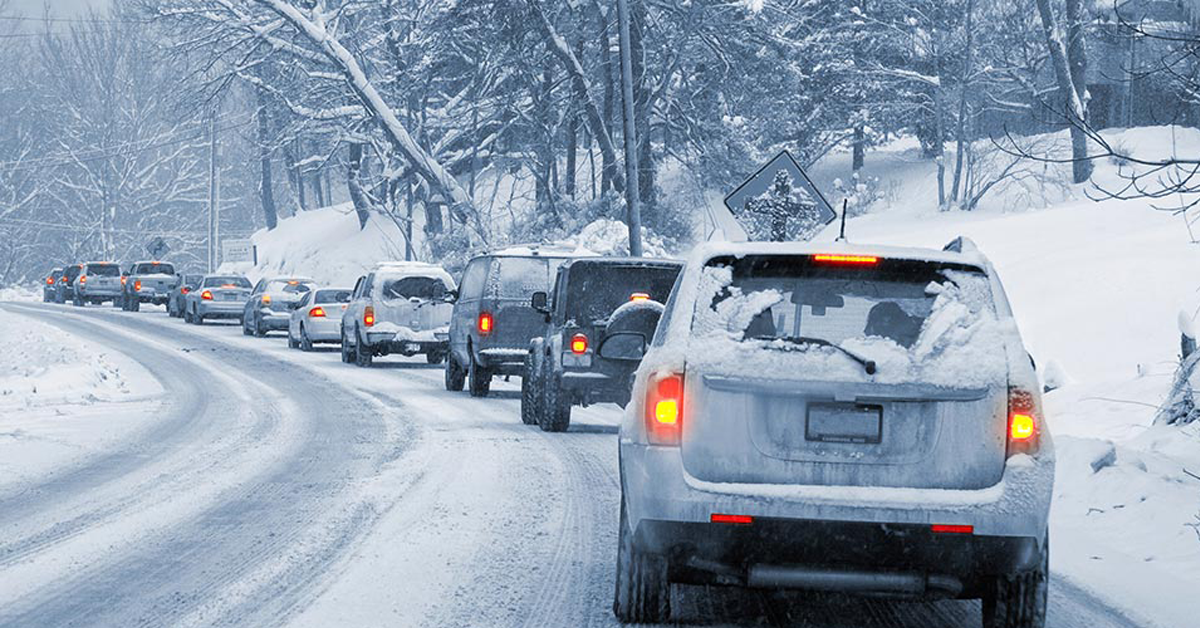Navigating Winter Roads: A Guide to Safe Driving in Cold Weather
As winter is upon us, so is safe driving in winter with the challenge of navigating icy roads and snowy landscapes. Safe driving in winter cold weather requires a combination of preparation, awareness, and smart decision-making. In this blog, we will explore essential tips and practices to help you stay safe on the roads during the winter months.
What Can You Do?
- Prepare Your Vehicle: Before hitting the road in winter, ensure that your vehicle is winter-ready. This includes:
- Winter Tires: Invest in quality winter tires for better traction on snow and ice.
- Antifreeze Levels: Ensure proper antifreeze levels to prevent the engine from freezing.
- Battery Check: Cold weather can be tough on car batteries. Make sure your battery is in good condition.
- Wiper Fluid: Use winter-grade windshield washer fluid to prevent freezing.
- Check Weather and Road Conditions: Stay informed about weather forecasts and road conditions before you embark on your journey. If conditions are hazardous, consider delaying your trip or using alternative transportation.
- Slow Down and Increase Following Distance: Driving at a reduced speed allows for better control on slippery roads. Increase the following distance between your vehicle and the one in front of you to account for longer stopping distances.
- Avoid Sudden Movements: Smooth and gradual movements are key in icy conditions. Avoid sudden acceleration, braking, or sharp turns to prevent skidding.
- Brake with Caution: Use gentle and steady pressure on the brakes. If your vehicle is equipped with an anti-lock braking system (ABS), apply firm pressure and maintain it during an emergency stop.
- Clear Snow and Ice: Before driving, remove all snow and ice from your vehicle, including windows, mirrors, and lights. Clearing the roof prevents snow from sliding onto your windshield while driving.
- Use Headlights: Visibility can be significantly reduced in winter weather. Keep your headlights on, even during daylight, to make your vehicle more visible to others.
- Stay Informed on Road Closures and Alerts: Be aware of road closures, detours, and alerts from local authorities. Having access to real-time information can help you plan a safer route.
- Pack an Emergency Kit: Prepare a winter emergency kit containing essentials such as a blanket, extra clothing, non-perishable snacks, a flashlight, and a first aid kit. In case of an unexpected delay or emergency, these items can prove invaluable.
- Know When to Stay Home: Ultimately, if conditions are extremely treacherous, the safest decision may be to stay home. If your journey is not essential, consider postponing it until conditions improve.
Safe driving in winter is essential due to the increased risks posed by snow, ice, and reduced visibility. Cold weather conditions can drastically affect road surfaces, making them slick and unpredictable. Drivers should begin by properly preparing their vehicles before heading out—this includes checking tire tread and pressure, ensuring windshield wipers and defrosters are functioning, and keeping antifreeze levels topped off. Equipping your car with winter tires and an emergency kit (including blankets, flashlights, and non-perishable food) can also make a big difference in the event of an unexpected breakdown or delay.
When driving in winter weather, it’s crucial to adjust your behavior to match the conditions to enable safe driving in winter. Reducing speed, increasing the following distance between vehicles, and avoiding sudden braking or sharp turns can help prevent skidding and accidents. Black ice, which is nearly invisible, poses a particular danger and often forms on bridges, overpasses, and shaded roadways. Drivers should also use low beams in heavy snow and avoid using cruise control on slippery roads, as it can make it harder to regain control if the car begins to slide.
Staying informed about weather conditions and planning routes accordingly is another key part of safe driving in winter. It’s wise to give yourself extra travel time and to let someone know your expected route and arrival time, especially during severe weather. If road conditions become too dangerous, it’s often best to delay travel until it’s safe. Ultimately, winter driving safety comes down to preparation, caution, and smart decision-making—factors that help protect not only yourself but everyone else on the road.
Safe driving in winter and cold weather requires a combination of preparation, caution, and adaptability. By following these tips and staying informed, you can navigate winter roads with confidence, reducing the risk of accidents and ensuring a safer driving experience for yourself and others. Remember, it’s better to arrive late than not at all. To learn more about safe driving in winter, read this article from the national highway safety administration. If you, or someone you know, is in need of an automobile accident lawyer—contact our team to see how we can help.

Recent Comments